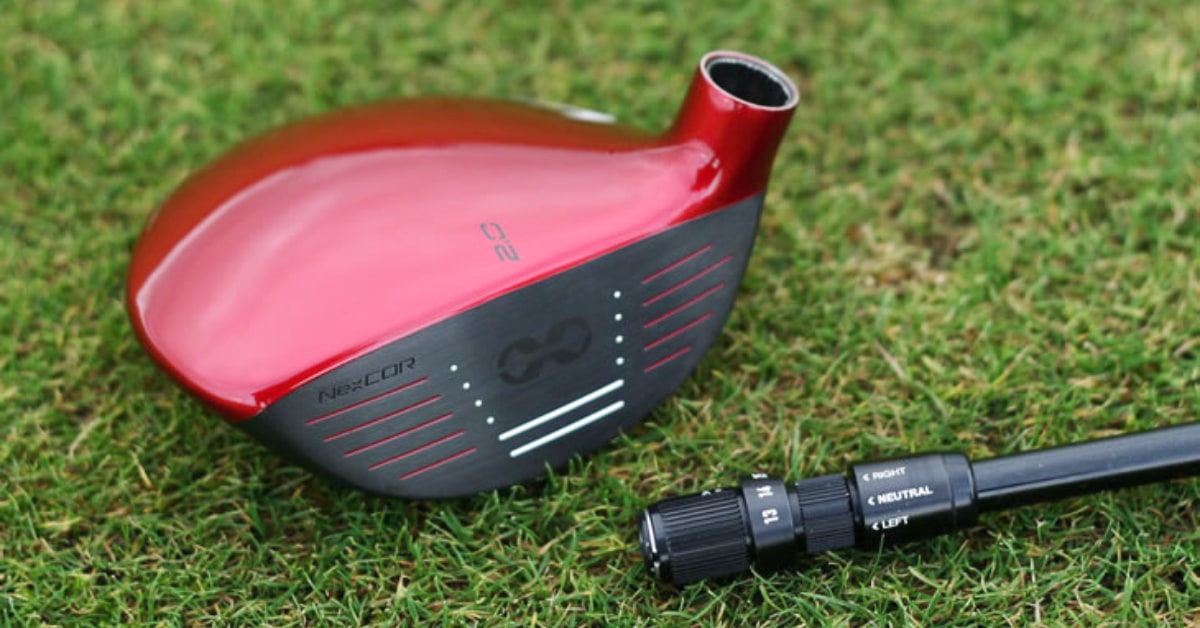Nowadays, plenty of drivers have adjustable hosels to alter the loft angle.
Having the ability to adjust the loft of your driver can be a huge benefit, allowing you to fine-tune your setup according to your unique swing mechanics.
But, does adjusting driver loft open the face?
In this article, I’ll explain what happens when you adjust the driver loft. It alters the ball flight in several ways, which can ultimately help (or hinder) your golf game.
Ready? Let’s get into it!
Does Adjusting Driver Loft Open the Face?
No, increasing the loft on an adjustable driver will close the face. Conversely, when you decrease the loft, the clubface will sit more open at address. That said, you still have control over the face angle by aligning it square to the target.
For instance, when you adjust a 9º driver to the 11º setting, it will close the face.
In general, this is beneficial for those who typically slice their tee shots. The closed face will promote a draw, counteracting the left-to-right cut spin.
Of course, this is only impacting how the clubface sits at address. If you wanted, you could ensure the face remains square to the target with any setting.
However, most everyday golfers won’t necessarily get their driver face aimed perfectly in their setup. So, more loft will generally promote a closed face.
This concept is explained well in this video about adjustable hosels:
Other Effects of Adjusting Driver Loft
So, we’ve gathered that adjusting the driver loft will alter the face angle at address.
But, it also affects your ball flight by changing the following:
- Launch Angle
- Sidespin Rate
- Backspin Rate
Let’s dive into each of these in detail!
1. Launch Angle
When the loft angle is increased, the launch angle will increase.
In short, that means you will hit the ball with a higher trajectory.
Usually, slower swing speed golfers benefit from higher launch. This is because it helps to get the ball aerial sooner, which maximizes distance off the tee.
On the other hand, players with higher swing speeds are better suited to lower launch angles. With higher ball speeds and a lower loft angle, you’ll be able to hit low, penetrating tee shots for optimal carry distance and roll out.
Ultimately, adjusting the driver loft to a higher loft angle is better for those with slower swings, while lower loft angles are better for faster swing speeds.
2. Sidespin Rate
Typically, increasing the loft on a driver reduces the amount of slice spin.
The slice is one of the most common driver faults I see in everyday golfers.
One of the primary causes of the slice is when the clubface is open when it meets the ball at impact. This cuts across the ball, applying left-to-right sidespin.
As mentioned earlier, increasing driver loft closes the face. Therefore, with more loft, the face is likely to be more closed at impact. This greatly reduces the risk of the face being left open at the point of contact, thus reducing sidespin.
Ryan Barath of Golf Magazine states that “It’s also important to keep in mind that face contact is one of the biggest contributors to spin which is caused by gear effect, [so] look at where you are contacting the ball on the face.”
3. Backspin Rate
Lastly, a higher loft angle will generate more backspin.
While increased launch and reduced sidespin are positives for many golfers, a higher backspin rate will actually knock a few yards off your distance.
Having said that, more spin isn’t necessarily a bad thing for many golfers.
If your swing speed is on the low to moderate end, a higher rate of backspin will help get the ball aerial. It goes hand in hand with the increased launch angle.

How to Adjust Driver Loft
For many everyday golfers, more loft = more accuracy and less risk of slices.
If you have an adjustable driver, changing the loft angle is as simple as using a torque wrench to switch it to the correct hosel setting.
While this varies slightly across manufacturers, here’s a general guide:
- Step 1: Find the correct adjustment tools for your driver
Your driver likely came with a wrench and a small booklet explaining the different loft angles that the driver is capable of. If you purchased a driver and don’t have the correct wrench, you’ll need to order one before you start!
- Step 2: Use a torque wrench to remove the driver head
Use your torque wrench to remove the head of the driver. The first turn will usually take a bit of effort, but from there it should easily release.
- Step 3: Choose the setting and tighten the head back in position
Now you’ll need to look at the setting on the hosel; it is usually labeled clearly to let you know the loft setting. Once you find the correct position, go ahead and tighten the driver’s head to get it back into place.
- Step 4: Test out the new loft and assess the results
Make sure that you hear that torque wrench click so that the driver’s head is completely secure. Take your newly customized driver out to the range to test it out. Make sure to adjust the loft by a ½ degree or one degree each time; slight adjustments are best when testing different settings.
Here’s a handy video demonstration:
FAQs
Here are a few common questions when adjusting driver loft:
When Should I Change the Loft on My Driver?
You should consider changing the loft on your driver when your tee shots are becoming inconsistent, or if you are prone to hitting a slice or a hook.
If you feel as though your driver swing is correct, but you still can’t achieve your intended ball flight, it could be time to make the change to a new driver loft.
In many cases, changing to a higher-lofted driver is the best approach for everyday golfers. This will reduce the amount of sidespin, and get the ball aerial quickly.
How Many Degrees Can You Adjust a Driver?
Typically, the loft angle on adjustable drivers can be changed by 1-2º up and down from their standard loft.
For instance, my Cobra driver has a standard loft angle of 9º and can be changed up to 11.5º and down to 7.5º using the in-built adjustable hosel.
When purchasing a driver, make sure you choose a loft that allows you some versatility and the proper range of loft for your golf game.
Final Thoughts
Ultimately, you should adjust your driver loft if you struggle with hitting a slice or a hook, or feel as though the ball flight is not optimized for your swing speed.
The loft on a driver has a significant lever on ball flight. If you want to see how it will change, you’ll need to use a driver with an adjustable hosel.
Be aware that when the loft changes, so does the face angle. Adjusting driver loft does not open the face — it closes it and promotes a draw bias at setup.
If you have an adjustable driver with movable weights, you may also be able to fine-tune the ball flight to further encourage a draw or fade bias.


